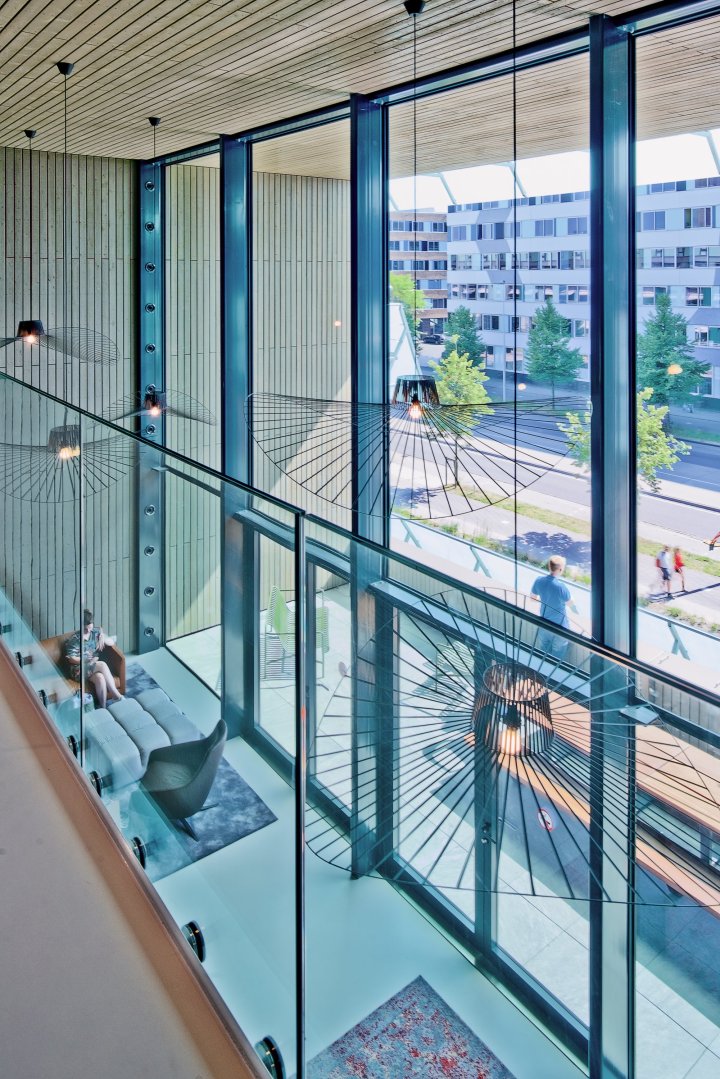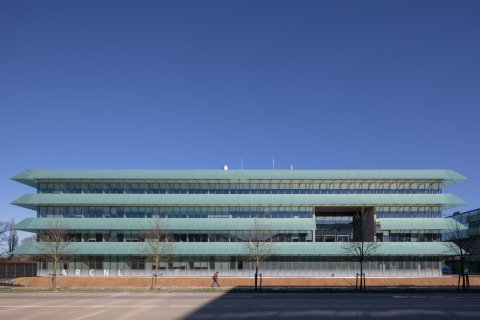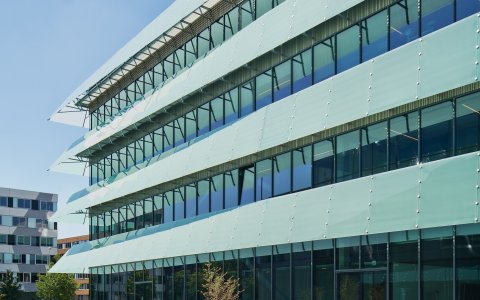
Matrix VII Life Science Incubator, Amsterdam
Following the success of an earlier project with the Matrix Innovation Centre, Ector Hoogstad Architecten was once again selected, in 2015, to design another Matrix building, Matrix VII. Located at the Amsterdam Science Park, this successor to Matrix VI houses start-ups alongside the main tenant, the ARCNL research institute. EHA was chosen not only for its experience and expertise, but also because of our collaborative approach to designing for the natural sciences. Moreover, EHA and ARCNL have a common view on pushing the boundaries of sustainable architecture.
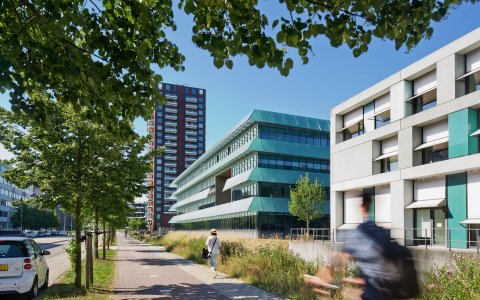
Project details
Name Matrix VII
Client Matrix Innovation Centre
Location Amsterdam
Status Completed 2018
Architect Ector Hoogstad Architecten
Building services engineer Croonwolter&dros
Contractor Züblin
Costs consultant IGG
MEP consultant Deerns
Structural engineer IMd Consulting Engineers
Transport system and sustainable engineering Deerns
Photography Petra Appelhof
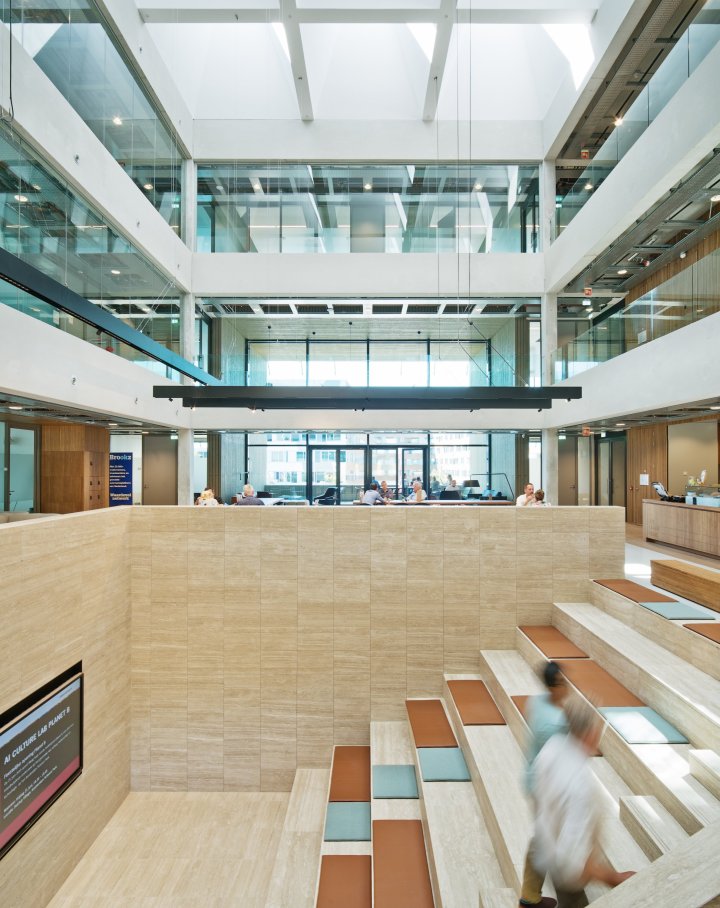
Life sciences clusters
Maps of the Netherlands reveal several geographic concentrations of interconnected life sciences companies and institutions. One of these is the Amsterdam Science Park, whose north-western area has for years boasted the highest concentration of NWO-I institutes in the country. This is where you’ll find the National Institute for Subatomic Physics (Nikhef), the national research institute for mathematics and computer science (CWI) and AMOLF, which performs research on natural and man-made complex matter.
ARCNL was added to NWO-I’s list of institutes in 2015, having been founded as a partnership between Amsterdam’s two universities, the NWO and ASML. As a public-private partnership, it focuses on the fundamental physics and chemistry behind current and future technology for nanolithography in order to advance science but also for application by its industrial partner in Veldhoven.
Hardware upgrade for the science park
In its early years, ARCNL conducted its research in a former nuclear bunker owned by Nikhef, the building offering suitable conditions owing to its substantial concrete mass. It was, however, clear from the outset that the institute needed a purpose-built facility, particularly one with the sort of vibration-free floors that the park didn’t have at the time. Matrix VII is therefore a hardware upgrade that boosts the park’s long-term research capabilities.
Matrix VII features a well-thought-out and clear internal layout. The ground floor is comprised of a block of laboratory modules designed to satisfy the most stringent requirements possible for a building located in the wet polder of the Watergraafsmeer: vibration-free floors, glare-free rooms and exceptionally stable climate conditions. Around this is a ring composed primarily of offices, alongside ancillary facilities, workshops and even a co-creation room for the entire science park, enabling ARCNL to present itself to the rest of the community as an open, vibrant and welcoming neighbour.
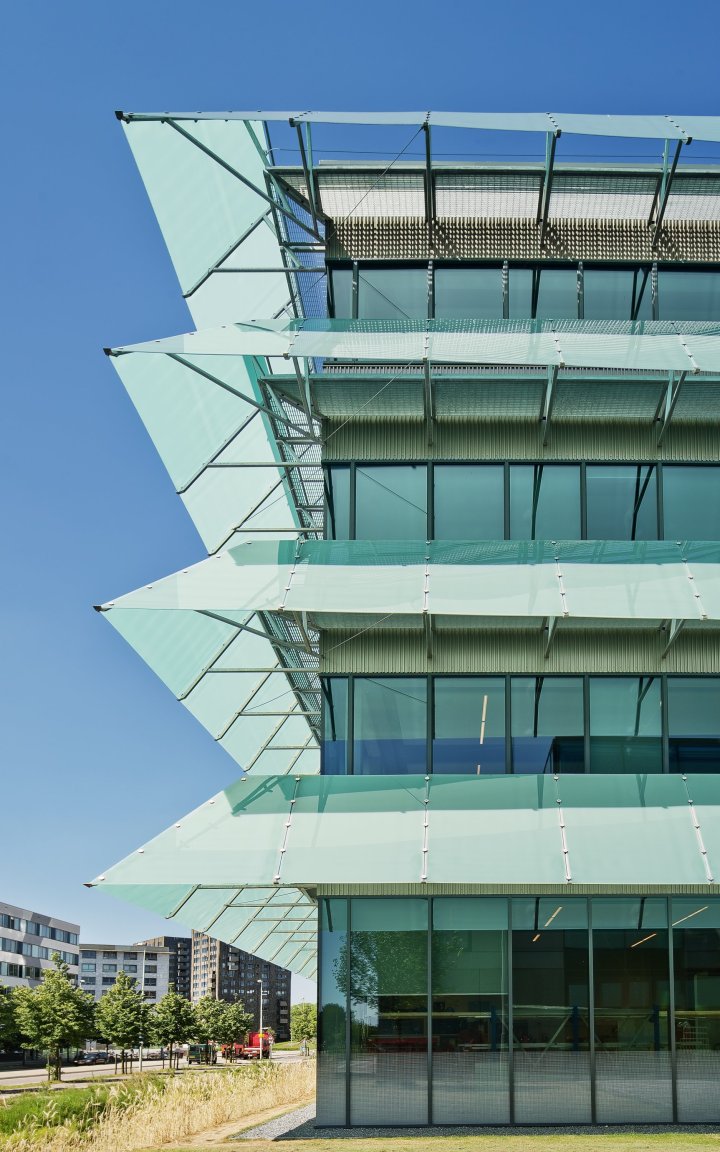
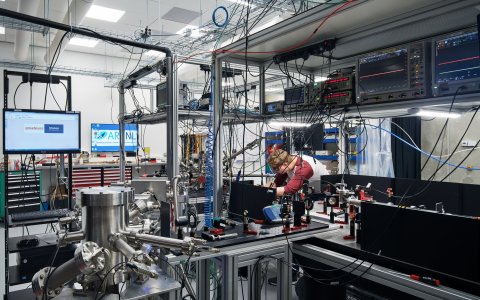
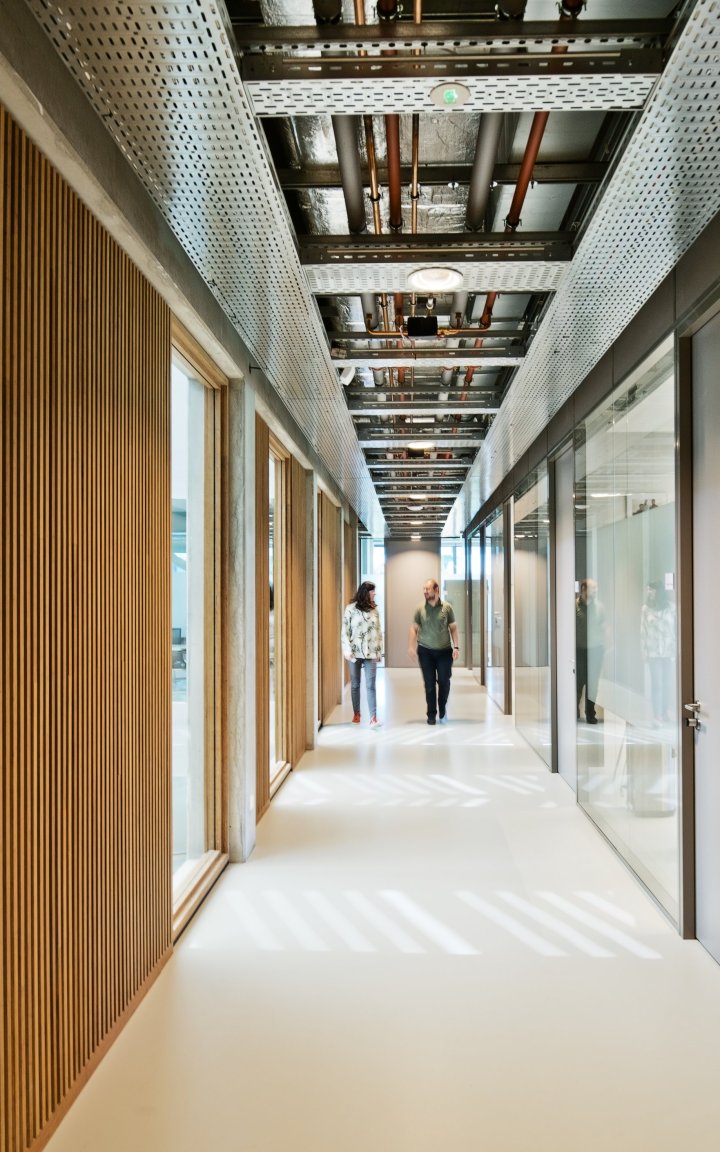
An ecosystem for the natural sciences
A wide staircase of natural stone greets visitors immediately upon entry, and doubles as a venue for presentations and special events. This leads to the social heart of the building, a publicly accessible atrium that rises from the first floor. Here you’ll find a coffee bar, lounge areas with armchairs and sofas, and several extendable tables, providing lots of spots for social interaction and relaxation, including over lunch. The atrium also houses a conference centre, which uses the bar area as a lobby. A second atrium, also rising from the first floor, is for the exclusive use of ARCNL. Amid the surrounding offices and conference rooms, it represents a green oasis for unwinding, having meetings or holding office parties.
The top two floors offer flexible co-working and laboratory space for start-ups and other tech companies for whom proximity to this growing ecosystem of natural sciences would be beneficial. Around the atria are rentable offices of various sizes.
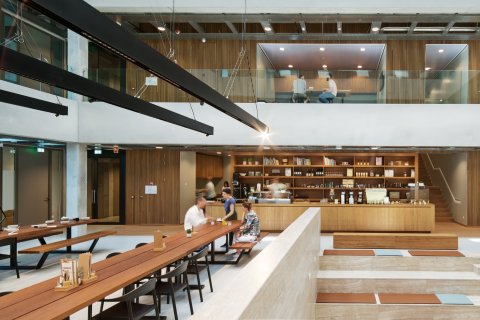
BREEAM-certified
As already mentioned, Matrix VII is an exceptionable sustainable building, and was designed to achieve BREEAM “Very Good” accreditation. The most striking features enabling this achievement are cold-bent glass panels that contribute enormously to the stability of the indoor climate. An orientation-dependent façade maximizes the amount of natural light entering the building while preventing unwanted solar heat gain. The building also features a green roof and generates most of its own energy. In addition, what energy the building does consume is minimised by the use of a seasonal thermal energy storage system and bGrid technology, a highly advanced building system that senses everything that happens within the building.
